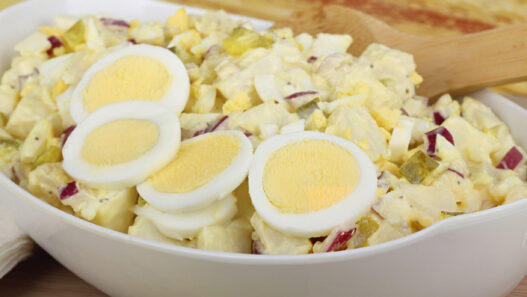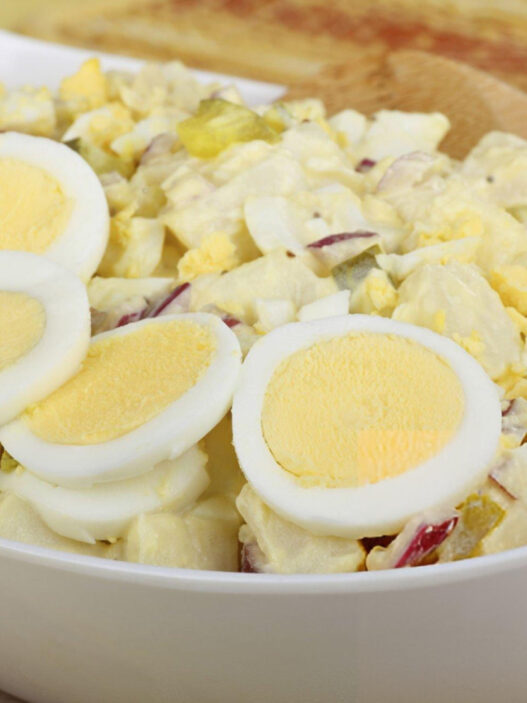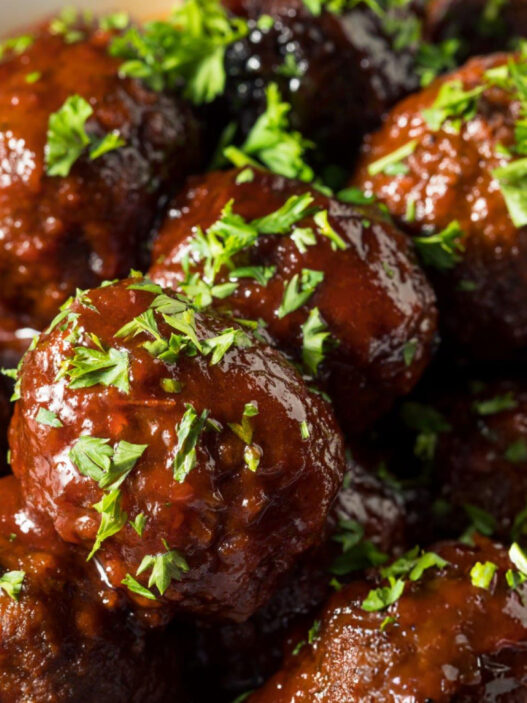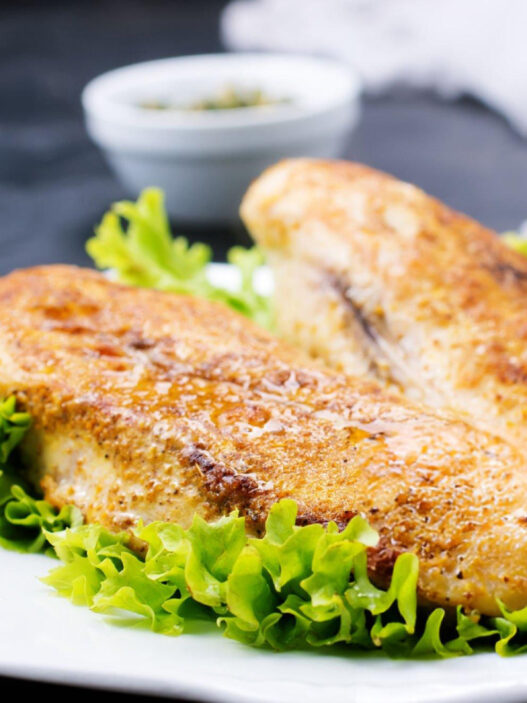Vegan lemon curd is a bright, citrus-kissed delight that delivers a perfect balance of sweetness and tang without a trace of dairy. Its velvety texture and vibrant flavor make it an exquisite addition to countless dishes—whether you’re topping a warm scone, filling a tender tart shell, or simply spooning it over a bowl of creamy oats. This plant-based version retains all the luxurious mouthfeel of traditional lemon curd, while embracing simple, wholesome ingredients.
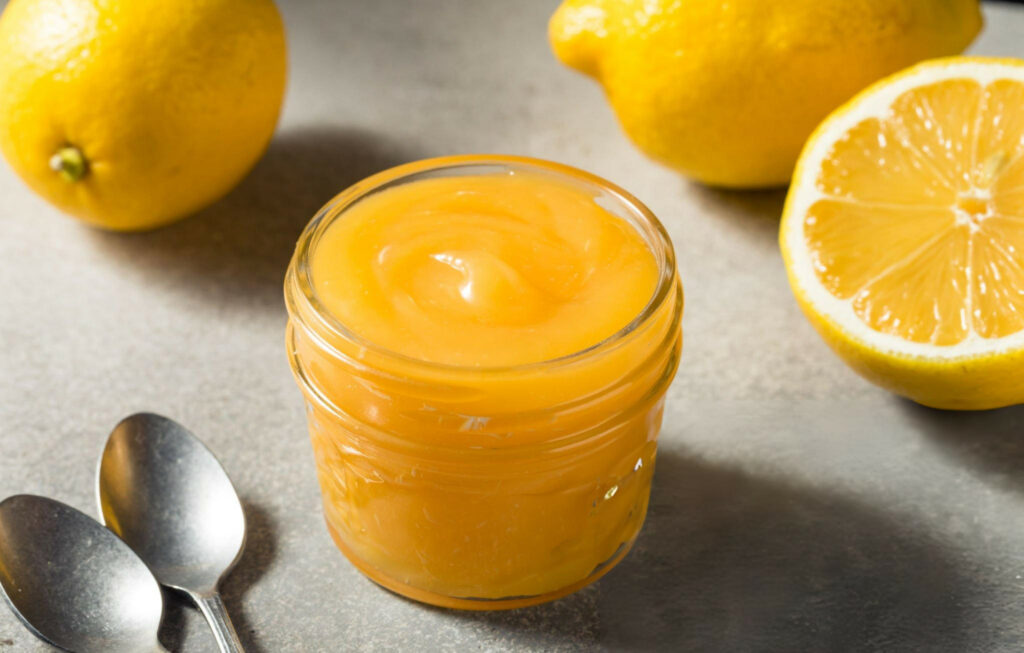
Ingredients Breakdown
Crafted from everyday pantry staples, this vegan lemon curd recipe is proof that you don’t need a long ingredient list to achieve something extraordinary.
Freshly squeezed lemon juice plays a central role in creating the bright, zesty character of the curd. Bottled alternatives lack the fragrant oils and nuanced sharpness that freshly cut citrus brings to the mix. The acidity of the lemon juice also helps the curd set, delivering a firm yet silky finish.
Plant-based milk, such as almond or soy, introduces creaminess and body. It acts as the base that carries the tartness of the lemon while softening its bite. Soy milk lends a slightly richer texture, while almond milk offers a more neutral backdrop, allowing the citrus to shine.
Turmeric, though optional, brings a sun-kissed yellow hue reminiscent of traditional egg-based curd. Just a pinch is all it takes to brighten the color without overpowering the flavor. It’s a clever visual enhancer that leaves no trace on the palate.
Step-by-Step Preparation Method
The process of making vegan lemon curd is straightforward yet elegant, yielding silky results with minimal effort.
It begins with a careful whisking of sugar and cornstarch in a small saucepan. This step is crucial—ensuring both ingredients are evenly distributed before introducing liquid helps prevent clumping later on. The mixture should resemble fine sand before moving forward.
Once the dry base is prepared, the plant-based milk, lemon juice, lemon zest, and optional turmeric are gradually mixed in. This gentle incorporation helps maintain a smooth consistency. A few extra moments of whisking here result in a perfectly uniform mixture.
With the pot set over medium heat, the mixture should be whisked continuously as it begins to warm. The transformation happens quickly—within minutes, the curd thickens into a glossy, pudding-like texture. As it thickens, switch to more vigorous whisking to ensure a lump-free finish. The final texture should coat the back of a spoon and ripple gently when stirred.
Once thickened, the curd is removed from heat and transferred into a heat-safe jar or container. It can be served warm for a soft-set consistency or cooled and refrigerated for a firmer, spreadable texture. As it chills, the curd will continue to set and intensify in flavor.
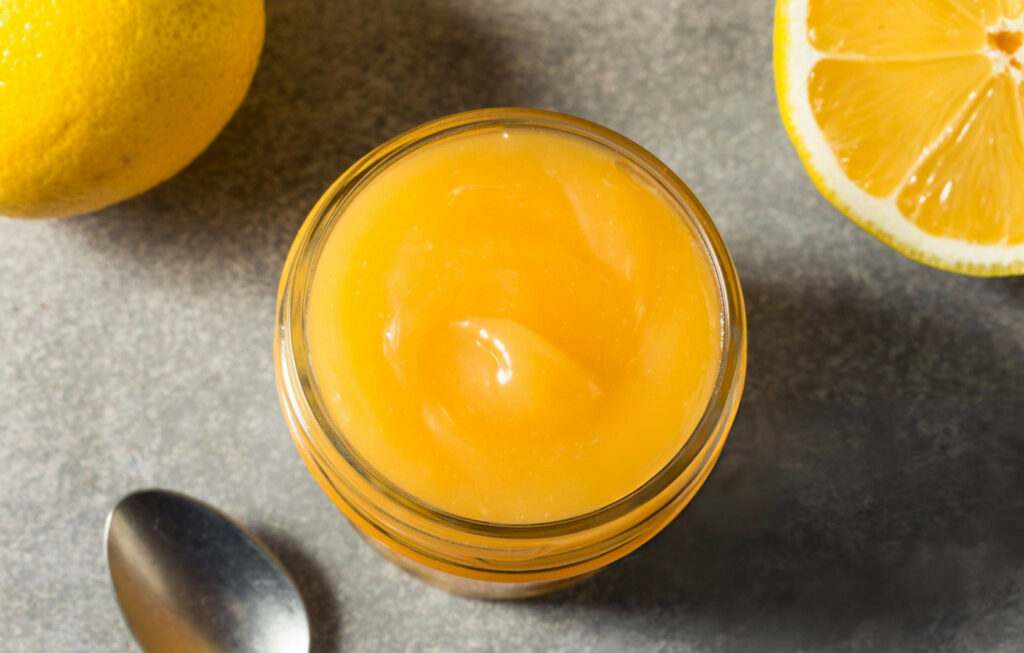
Recipe Tips & Frequently Asked Questions
How to avoid curdling and lumps during cooking:
Whisking constantly is key—don’t walk away during the heating process. Begin with well-combined dry ingredients, and increase the intensity of whisking as the mixture thickens.
Adjusting sweetness and tartness to suit your taste:
If you prefer a tangier curd, reduce the sugar slightly or add an extra teaspoon of lemon zest. For a sweeter version, add an additional tablespoon of sugar before heating.
Using different plant-based milks for varied results:
Almond milk creates a light and clean flavor profile, while soy milk delivers extra richness. Oat milk can also be used for a naturally sweet undertone, though it may slightly alter the consistency.
Tips for achieving a smooth, glossy finish:
A fine mesh strainer can be used post-cooking to remove any residual zest or starch lumps, leaving behind a perfectly smooth curd.
Can I use bottled lemon juice instead of fresh?
Fresh juice is highly recommended for best flavor, but in a pinch, high-quality bottled lemon juice can be used. Be aware that the flavor may be slightly less vibrant.
How do I fix curd that’s too thick or too thin?
If the curd becomes too thick, whisk in a splash of plant milk until it reaches the desired consistency. If it’s too thin, return it to the stove and cook a minute or two longer.
Can this be used in baked desserts?
Absolutely. This curd makes an excellent filling for lemon bars, layer cakes, and tarts. Allow it to cool and thicken before using in baked goods.
What’s the best way to reheat lemon curd, if needed?
Gently warm it in a saucepan over low heat, stirring constantly. Avoid boiling to preserve its texture.
What to Serve With This Recipe
Vegan lemon curd is endlessly versatile, lending itself to both sweet and savory applications.
Spread it generously over freshly toasted sourdough, warm muffins, or buttery vegan scones for an effortless breakfast or afternoon snack. The tangy citrus notes create a delightful contrast to soft, baked goods.
For weekend brunch, drizzle it over stacks of golden vegan pancakes or fluffy waffles. The curd acts as a vibrant topping that cuts through the richness of maple syrup or vegan butter.
Spoon it into bowls of creamy coconut yogurt or swirl it into warm oatmeal for a zesty, refreshing upgrade. Layering it in parfaits with granola and seasonal berries adds visual appeal and a burst of flavor.
It also shines as a dessert component—try using it as a filling for sandwich cookies, a topping for pavlova, or layered between sponge cakes for a bright citrus punch.
Creative Variations
Lemon curd’s beauty lies in its adaptability. The core method can be used to explore other citrus flavors with ease.
Swap the lemon juice for orange, lime, or grapefruit juice for a different take. Each brings its own unique character—orange is mellow and sweet, lime is sharp and vibrant, and grapefruit adds a slightly bitter complexity.
Add a spoonful of coconut cream to the mixture during cooking to create a richer, more decadent curd with a tropical flair. This version pairs beautifully with coconut cakes or pineapple-studded pastries.
For a refreshing twist, layer the curd in a glass with granola, sliced fruit, and dairy-free yogurt to build an eye-catching parfait that doubles as a snack or dessert.
Vegan lemon curd is a simple yet luxurious creation that adds brightness and flavor to any culinary occasion. With just a handful of ingredients and a few minutes on the stove, you can create a luscious, citrus-packed spread that’s as versatile as it is delicious. Whether served warm, chilled, or folded into your favorite treats, this dairy-free curd delivers bold flavor and silky texture every time.
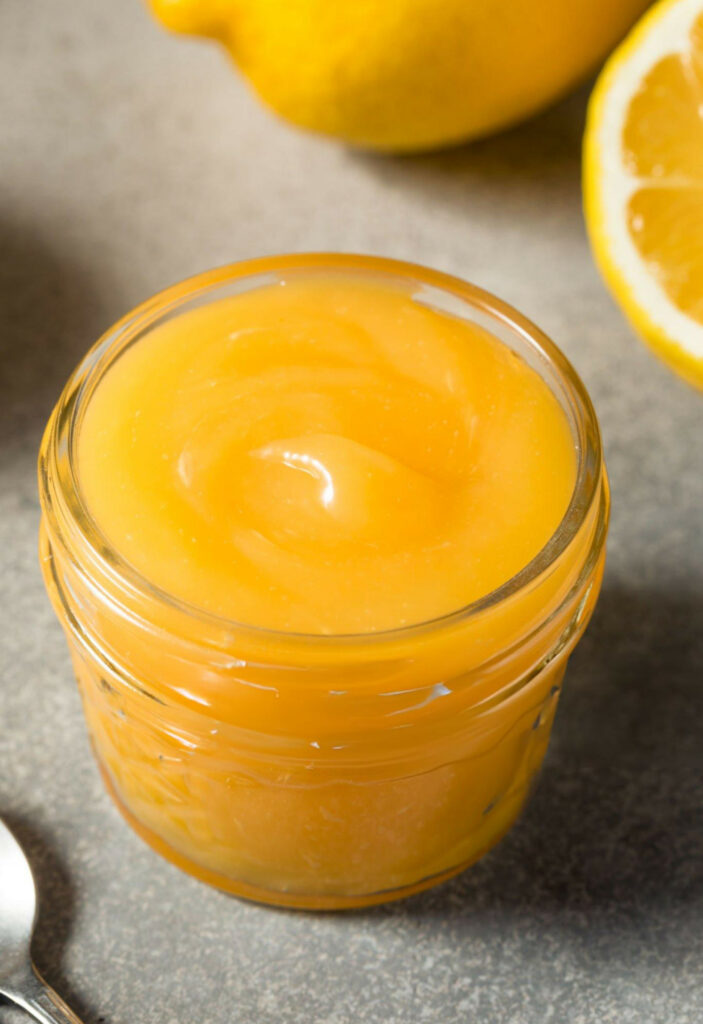
Ingredients
¼ cup freshly squeezed lemon juice (approximately 2 lemons)
½ cup plant-based milk (such as almond or soy)
½ cup granulated white sugar
2 teaspoons finely grated lemon zest (from about 1 lemon)
1 tablespoon cornstarch
⅛ teaspoon ground turmeric (optional, for a vibrant yellow hue)
Instructions
Start by combining the sugar and cornstarch in a small saucepan. Whisk thoroughly to eliminate any lumps and ensure the mixture is well incorporated.
Pour in the plant-based milk, followed by the lemon juice, lemon zest, and turmeric, if you’re using it for added color. Stir everything together until smooth.
Set the pot over medium heat. Continue whisking regularly as the mixture begins to warm up. After a few minutes, you’ll notice it gradually thickening—this usually takes around 5 minutes. As the curd thickens, whisk more vigorously to prevent any clumps and to achieve a silky, uniform texture.
Once it reaches your desired consistency, remove the pan from the heat and carefully transfer the lemon curd into a heatproof container or jar.
You can enjoy it warm, or allow it to cool completely before refrigerating. Store it in the fridge for up to one week. The curd will continue to thicken slightly as it chills.
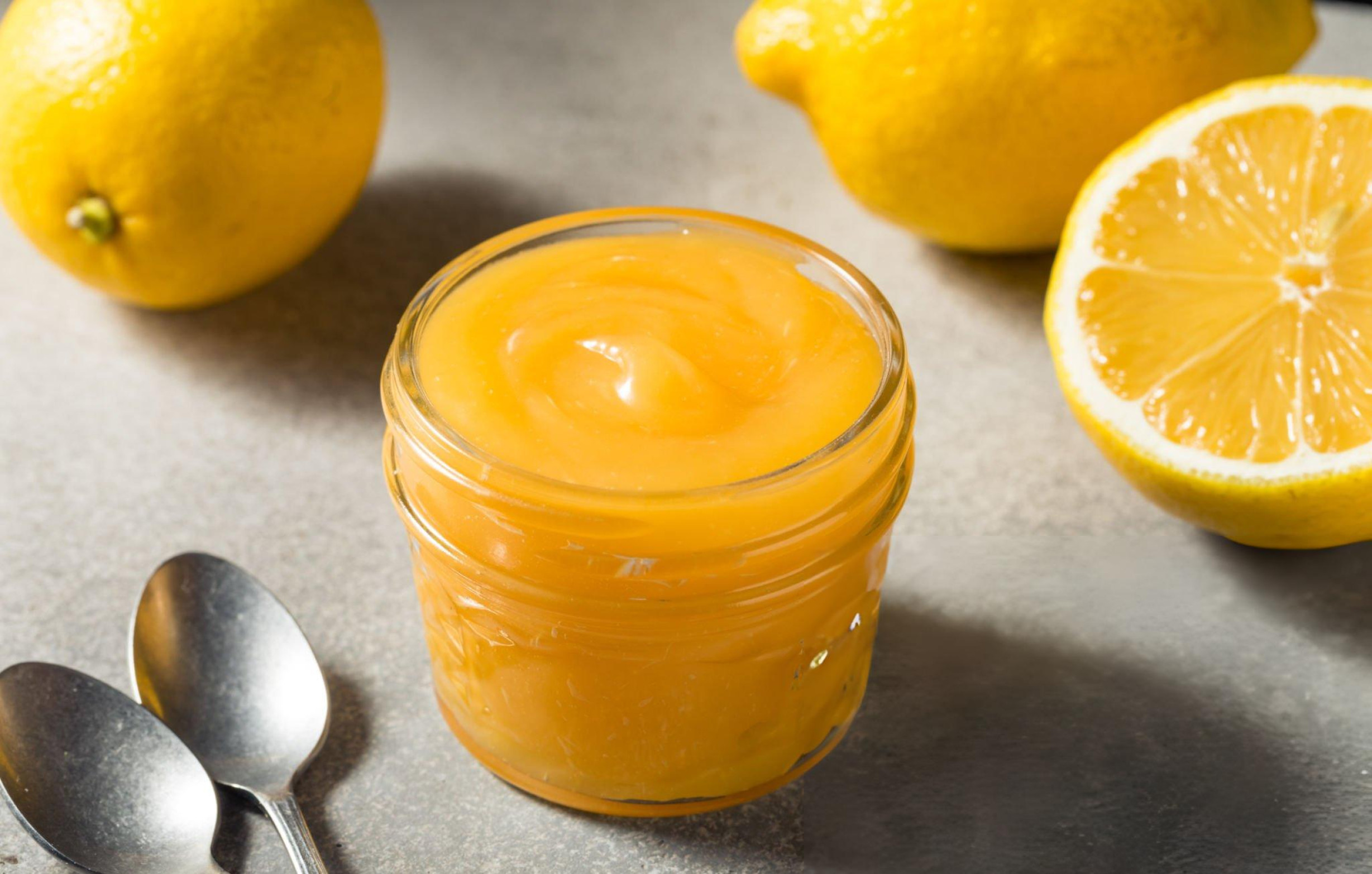
Vegan Lemon Curd Recipe
Ingredients
- ¼ cup freshly squeezed lemon juice approximately 2 lemons
- ½ cup plant-based milk such as almond or soy
- ½ cup granulated white sugar
- 2 teaspoons finely grated lemon zest from about 1 lemon
- 1 tablespoon cornstarch
- ⅛ teaspoon ground turmeric optional, for a vibrant yellow hue
Instructions
- Start by combining the sugar and cornstarch in a small saucepan. Whisk thoroughly to eliminate any lumps and ensure the mixture is well incorporated.
- Pour in the plant-based milk, followed by the lemon juice, lemon zest, and turmeric, if you’re using it for added color. Stir everything together until smooth.
- Set the pot over medium heat. Continue whisking regularly as the mixture begins to warm up. After a few minutes, you’ll notice it gradually thickening—this usually takes around 5 minutes. As the curd thickens, whisk more vigorously to prevent any clumps and to achieve a silky, uniform texture.
- Once it reaches your desired consistency, remove the pan from the heat and carefully transfer the lemon curd into a heatproof container or jar.
- You can enjoy it warm, or allow it to cool completely before refrigerating. Store it in the fridge for up to one week. The curd will continue to thicken slightly as it chills.

